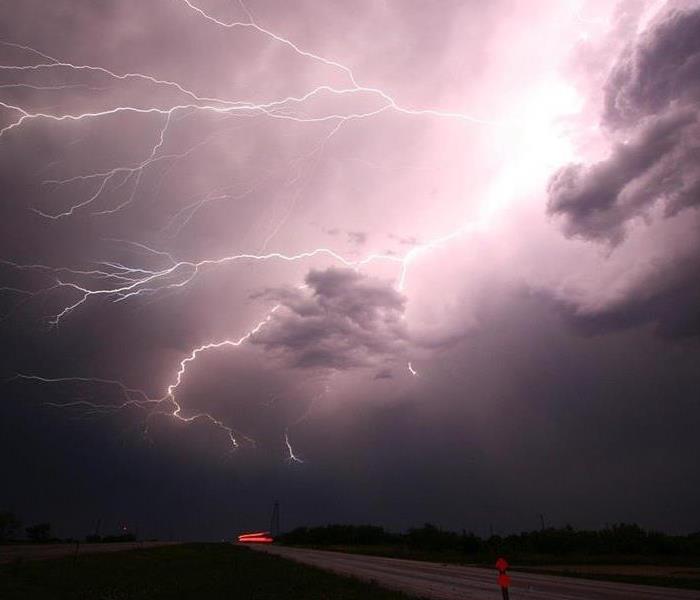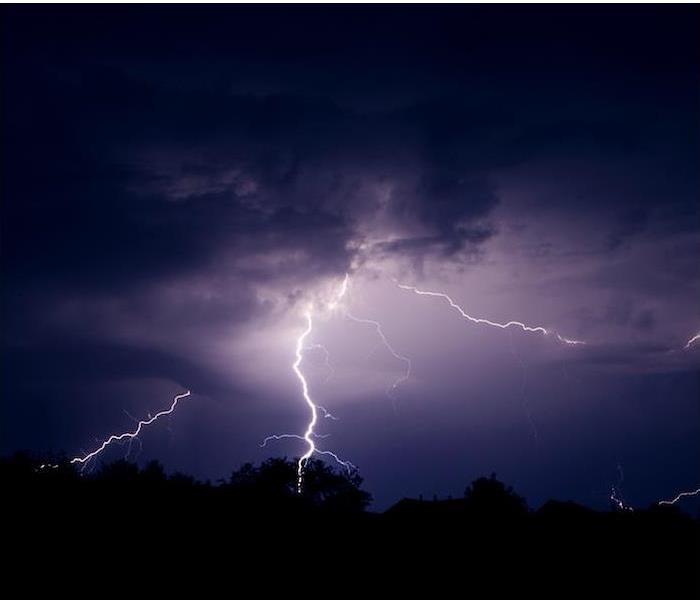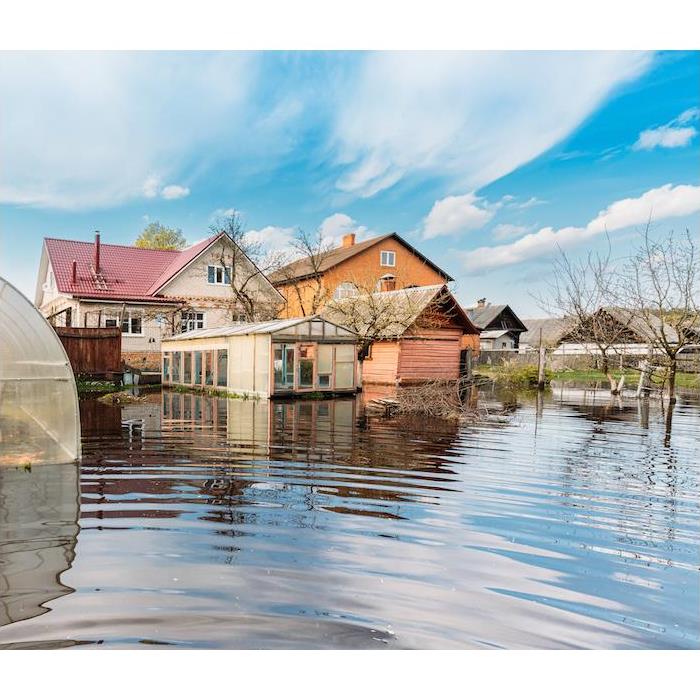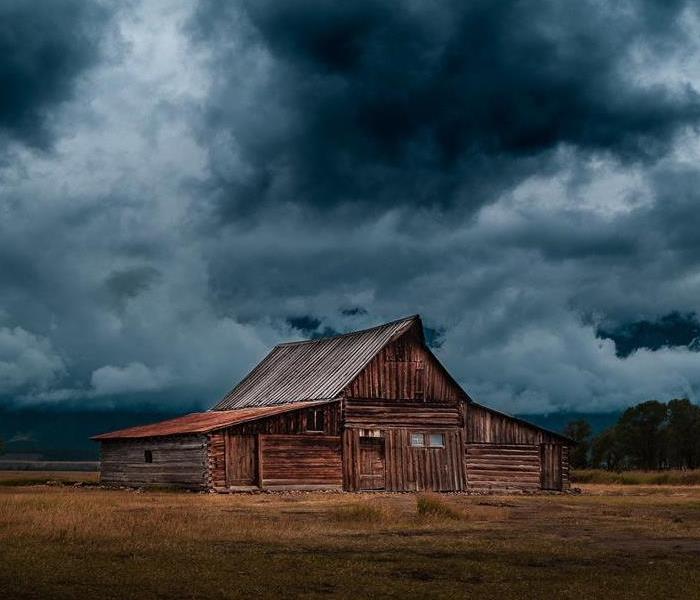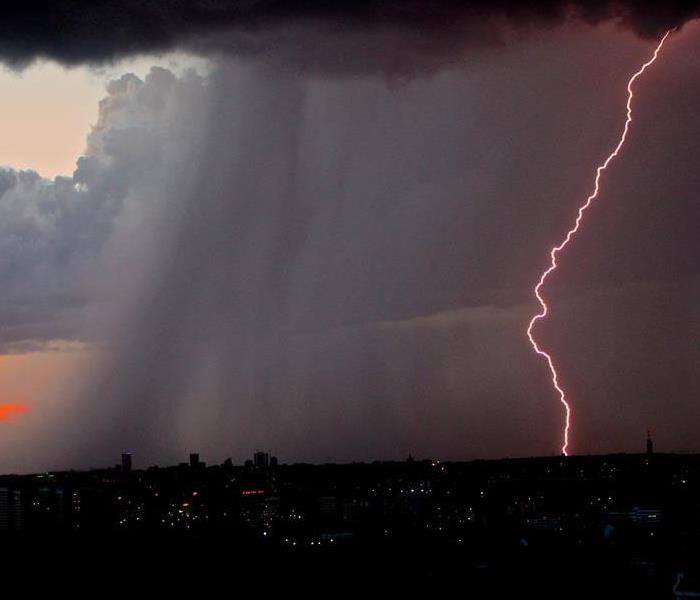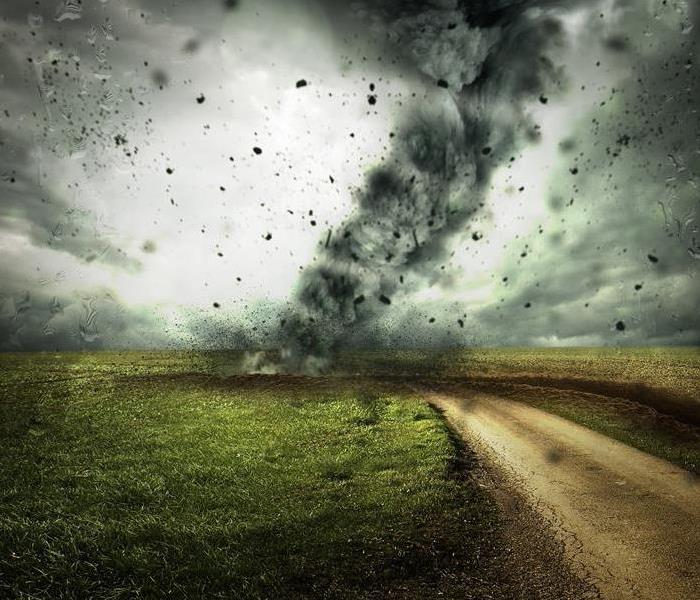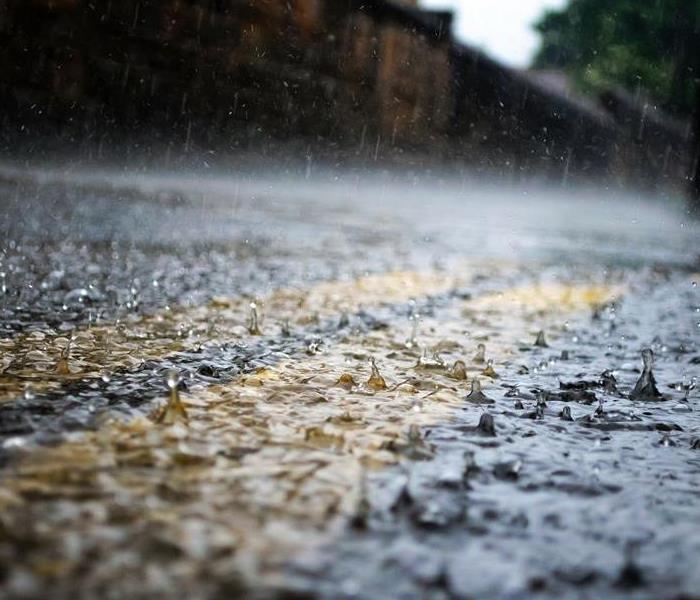Recent Storm Damage Posts
Flood Prevention: The Basics | SERVPRO of Harlingen/San Benito
4/1/2024 (Permalink)
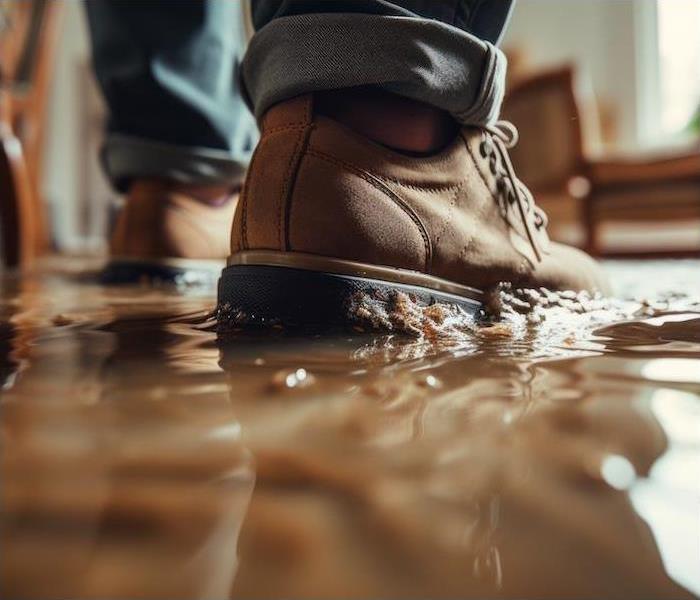 SERVPRO of Harlingen/San Benito is ready to help in a moments notice after spring showers leak in to your home or business.
SERVPRO of Harlingen/San Benito is ready to help in a moments notice after spring showers leak in to your home or business.
Keep it simple. Mastering the basics is the best way to get something done the correct way—which can be a helpful thing to remember the next time you have to help your children learn any kind of math.
Getting back to the basics can be a helpful way to protect your home from natural disasters, too. There might not be any way to fully control Mother Nature, but the more prepared we are for everything she can bring our way, the less damage we will end up with.
Flooding is one of the top natural disasters that affects homes all around the nation. That makes being prepared for potential water damage crucial in protecting our homes.
Know Your ZoneFlooding is such a big issue because it can happen in so many different ways, and not all of them come from nature. Internal, manmade disasters (like appliance failures) can be destructive, but they are often easier to control than external floods. With our community so close to the Gulf of Mexico, all of our homes are vulnerable to coastal flooding, storm surge and flash flooding.
One of the best steps you can take is getting to know where the area’s flood zones are. This can help you understand the exact threats your property faces and how much preparation you will need to do in order to be as safe as possible.
It is also a good idea to get to know exactly how wet your yard gets when it rains or water starts pushing inland. If you are in a low-lying area, adding drainage or increasing the length of your gutter downspouts in order to get as much water away from your house as possible.
Lots of trees in your yard can lead to blocked gutters and debris pileup on your roof. Gutter covers can be a helpful way to stay protected, but you will also want to inspect your roof at least twice a year and after big windstorms.
Prepare to PreventThe more you can get to know the area around your home, the easier protecting your home will be. There are a few other steps you can take as well. Spend some time caring for your yard as your first line of defense against rising waters.
Create gentle sloping in your yard to allow water to flow away from your house. If there is a spot in your yard that stays wet or consistently washes out, consider adding a rain garden with deep-rooted plants that will pull water down into the soil. If they are not there already, put your gutter downspouts underground. That will keep them safe from damage during a flood, and it will direct rain water off of your property.
Inside, maintain the seals on your windows and doors. Replace caulking and weather seals as they wear out. If you have them, close your hurricane shutters and make sure they are in good shape. Have your basement resealed when visible gaps or cracks appear, and add a sump pump if you don’t already have one.
When it comes to preparing for a flood, keep it simple. Basic maintenance inside and out can go a long way in protecting your home. And it will be much easier than trying to remember the rules of algebra again.
Do you have water damage in your home? Contact us at SERVPRO® for fast recovery.
Being Prepared for the Storms of Spring | SERVPRO of Harlingen/San Benito
3/1/2024 (Permalink)
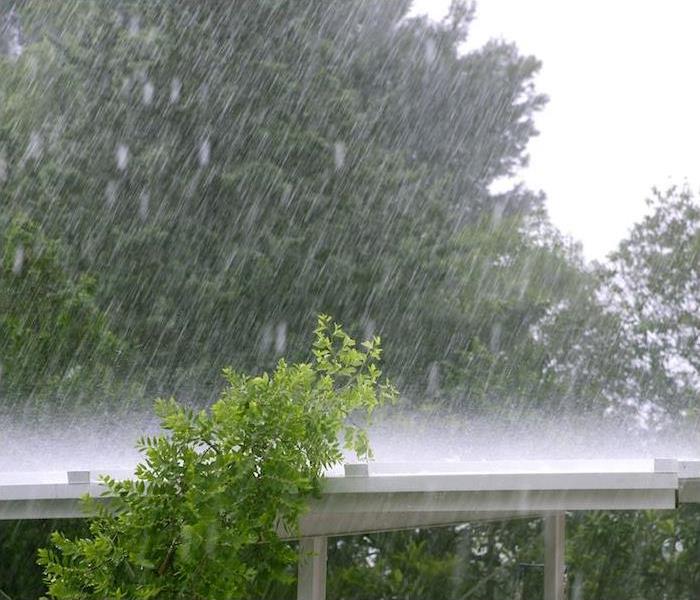 Let SERVPRO of Harlingen/San Benito help you get from April showers to May flowers.
Let SERVPRO of Harlingen/San Benito help you get from April showers to May flowers.
Spring in Texas comes with plenty of warm temperatures, heavy rains and even the possibility of a few severe storms.
Spring might be one of the best seasons, but as it stretches closer toward summer and the temperatures start to get hot, storms often get worse. Hurricane season starts, and Mother Nature starts getting riskier and riskier. The possibility of strong storms means it is incredibly important to be prepared for anything.
In order to be as safe as possible, you need to ensure that you can receive weather alerts quickly. Fortunately, there are some great ways to stay ahead of anything that comes our way.
The Power of the InternetThere is a good chance your cell phone is never very far from your hand, which is why it is one of the best places to receive weather alerts. There are Wireless Emergency Alerts that will come through automatically, but you can also choose from a wide variety of apps to get alerts from.
When you choose an app, stick with one that is from a nationally recognized organization. Local news stations and radio stations often have their own app that will not only keep you up to date with the weather, but other local news as well. Be sure to sign up for alerts from the county as well for the best localized info.
Don’t rely on alerts alone, though; make sure you keep an eye on the local news as well. That way you can stay ahead of anything headed your way and up to date on evacuation orders and shelter openings.
Non-Electronic OptionsOur phones, tablets and computers are great for keeping us connected; but they have batteries that will eventually run out. It is important to have a backup way to receive emergency alerts. Storms can quickly knock out power long-term, and you need to receive the most information possible in order to stay safe.
If you live close enough to town weather sirens, make sure you know what the sounds they make mean in order to respond appropriately. An NOAA weather radio is a portable tool that requires no power to give you consistent information. You will want to take it with you wherever you go, even after the first system has passed over. There could be more storms behind it.
Staying prepared and connected can go a long way in keeping you safe, but it may not prevent damage to your home during a storm. If your home is damaged, call us right away. We can start your recovery day or night and get you back to normal before you know it.
Serious storms can cause serious property damage. Call SERVPRO® 24⁄7 for immediate restoration assistance.
Damage to Your Home | SERVPRO of Harlingen/San Benito
11/17/2023 (Permalink)
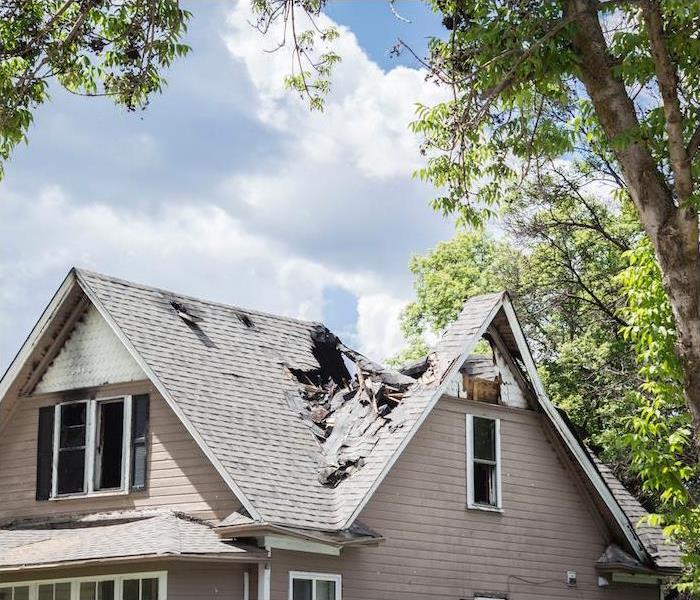 If you discover damage in your residence, call SERVPRO of Harlingen/San Benito right away.
If you discover damage in your residence, call SERVPRO of Harlingen/San Benito right away.
Owning a home comes with a lot of joy and a lot of risks. There are so many ways your home can be damaged, whether it is during a storm, because of a fire or due to just everyday aging. Even the neighbor who gets a little overzealous while playing ball with his kids can leave you with a broken window and one more thing to fix.
There may be risks to our homes on a daily basis, but we can’t spend all of our time worrying about them. If you are proactive about preparing for the ways in which your home might experience a disaster, even an unpredictable storm won’t do much harm.
The best way to prepare is to first understand what exactly could happen in different scenarios. Understanding the kinds of damage your home might face not only helps you stay ahead of them, but it also can give you reassurance of how quickly recovery can happen. SERVPRO® of Harlingen/San Benito is right around the corner, ready to get you back on your feet after any disaster.
The Biggest RisksLife in Texas comes with plenty to enjoy and plenty to be prepared for. Being so close to the Gulf means that coastal flooding, hurricanes, tornadoes and strong thunderstorms are all possible. Our homes are also at risk because of the extreme heat we often see in the summer—and even the occasional wildfire.
While we may experience a multitude of risks in Harlingen, we need to be most prepared for the three most common kinds. Damage to the roof, water damage and fires are the top dangers to homes everywhere, including our corner of Texas.
There are a number of ways water may damage your home, including internal sources you might not often think about, like plumbing or appliance failures. In the same way, your roof is at risk in just about every storm that blows through, but also from a tree limb that suddenly comes loose on a bright sunny day. Damage from fires can also start from different sources, although most home fires originate from human error.
Compounding DamagesLiving through a disaster is a traumatic experience that can only feel even more overwhelming when you begin to see the extent of damage that has been done to your home. Damages are often compounded, too—a flood not only leaves everything wet, but it also allows for mold to rapidly start to take over.
When a fire strikes, your home will experience damage from the flames, smoke and soot. Soot damage can spread into rooms that were nowhere near the actual fire, and water damage can abound as well from the firefighting efforts.
No matter how your home was damaged, recovery can happen one step at a time. Our crew has training in a number of scenarios, which means that there isn’t a single part of your restoration we can’t handle. We have industry-leading equipment and techniques to deal with water, fire and wind damage, but we can also tackle mold, remodeling, construction and odor issues.
After water has damaged your home, our first step will be to get everything as dry as possible. We will also seal off your home and make sure everything is structurally sound. This might include replacing a roof beam or it could mean repairing your foundation. We will also make sure any mold that forms is remediated, and everything is well sealed so that it cannot return. Sanitizing and odor removal will be one of the finishing steps in order to make your home as good as new.
Fire damage will be handled in a similar manner by tackling the most burned places first and ensuring your home is sealed from the elements. We will take a look at your whole house and rid every room of smoke, soot or odors that may have spread to them. If there are issues from the water or chemicals that were used to put the fires out, we will address those as well, and we can even rebuild parts of your home when the damage is extreme.
SERVPRO works directly with your insurance company, and since we are locally owned and operated, we know the right people to call at every step of the process. You won’t have to coordinate multiple contractors, we’ve got that covered for you. It’s our goal to make you recovery quick and smooth so you can get back to life as normal.
Does your home need restoration and you don’t want to make more than one call? Contact us to get everything handled by one team.
When Winter Storms Blow In | SERVPRO of Harlingen/San Benito
11/17/2023 (Permalink)
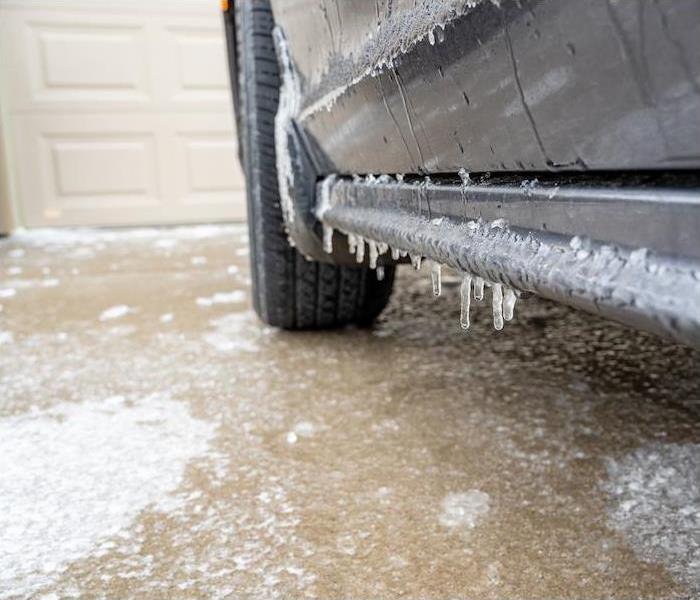 The winter season is almost upon us! SERVPRO of Harlingen/San Benito has your back with these helpful tips.
The winter season is almost upon us! SERVPRO of Harlingen/San Benito has your back with these helpful tips.
Since they are so rare, a winter storm can really throw our community off. We are far more accustomed to the warmer-than-average winters in Texas, but heavy, cold rains and ice can’t be ruled out during the season.
Regardless of what our winter does, when we take time to prepare, we can keep our families safe and prevent damage to our homes. Get to know what to do when a winter storm rolls through so you can avoid a disaster.
Preparing Your HomeWhen the weather is predicted to turn cold and severe, you need to be prepared to stay indoors for a little while. Heavy, cold rains, wind and ice can create a very dangerous driving situation as the roads get wet and sloppy.
If you have hurricane supplies, get them out ahead of a winter storm. Make sure your weather radio is working well, and think about what you will need to stay safe if the electricity goes out. We know from years past that winter storms can leave us without power long-term sometimes, so making sure your emergency supplies are ready is crucial for staying safe.
Make sure you have plenty of batteries, basic first-aid supplies and flashlights. If you use a generator, make sure you have the proper fuel for it and that you are prepared to use it according to the manufacturer’s safety guidelines. Gather up blankets, warm clothing and sleeping bags in order to bundle up and stay warm.
Think about your evacuation plans as well. While your reason for leaving isn’t the same as during hurricane season, you should still talk with your family and friends about potential alternate places to stay in order to keep everyone warm.
Taking Care of Your Home After the StormOnce the storm has blown over and you can safely get outside, give your house a good assessment to check for potential damage. Even if you don’t notice any damage from the storm, there are some things you need to do in order to make sure it stays that way.
Take a look at your roof to check for wind and rain damage. If there is any ice sticking around, break it up and make sure it can flow through your gutter system well. Check for other debris in your gutters and across your roof as well—leaves and limbs are still a common problem throughout the winter.
Once you know your roof is good, walk around your property and take note of the rest of your gutter system. Make sure everything is connected and that the exits of the downspouts are all clear. Clear debris from external vents on your home as well in order to prevent carbon monoxide build up inside.
How We Can HelpIf you do find damage outside or water starts coming in during the storm, call us right away. We are available to respond quickly and get a team out in order to assess everything your home will need to be completely restored.
We make it our goal to restore your damage quickly so that you can get outside and enjoy everything that the winter season has to offer.
Our team is always ready for anything! Contact us at SERVPRO of Harlingen/San Benito for a quick restoration after suffering damage from a winter storm.
Storm-Proofing From the Outside | SERVPRO of Harlingen/San Benito
9/19/2023 (Permalink)
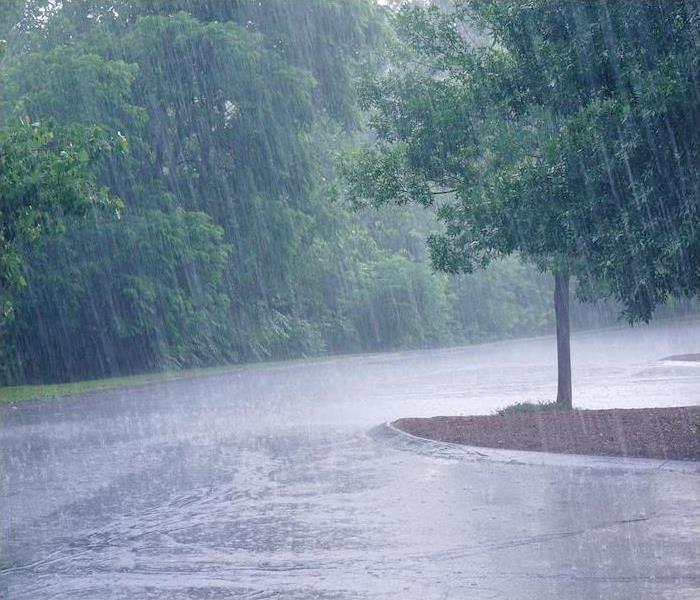 Have you been impacted by the unusual summer storm season? SERVPRO of Harlingen/San Benito has your back when you experience flood and water damage.
Have you been impacted by the unusual summer storm season? SERVPRO of Harlingen/San Benito has your back when you experience flood and water damage.
There are so many potential risks to your home from weather. Wind, hail, heavy rain, hurricanes and flooding all pose different threats that could cause complete chaos in your life. While the extremes will change seasonally and vary according to where you live, the threat is always present and something you should be prepared for.
Taking care of your home can feel pretty overwhelming just with regular maintenance. When you add in getting ready for severe storms and the endless amount of threats you might face, it can all be pretty daunting to think about.
Texas weather is always a mixed bag, with longer seasons of warmth than a lot of regions bringing the possibility of severe thunderstorms, heavy rains and even occasional tornadoes year-round. In the spring and summer, we also have to be prepared for the possibility of hurricanes.
In order to avoid damage, the best place to start your prep work is outside. Spend some time caring for the exterior of your home so that you can stay safe and cozy through every storm.
Seasonal PrepsWhile it might feel like a lot, protecting your home from severe weather doesn’t have to become a full-time job. Actually, there are a lot of ways you can incorporate some preparation steps into your regular routines in order to ensure you are always ready.
Wind and heavy rains are a force of nature pretty much everyone everywhere will have to contend with year-round. Regularly clean out your gutters and trim trees near your home to prevent flying debris that could smash windows and puddles of water that could work their way into your foundation. Keep outdoor furniture tied down or have a place to stash it quickly when things are getting rough. Get the kids involved and play “who can pick up the most sticks” to keep the yard clean.
At least once a week, walk the exterior of your home and look for signs of aging. Take note of gaps in bricks or siding and snap pictures of rotting wood so you can replace it. Make sure windows and doors are well-sealed, and get to be good buddies with your roof. Give your roof a complete inspection at least four times a year, looking for missing or loose shingles, spacing around any chimney or other piping or any other issues you should correct.
Home UpgradesKeeping your home safe doesn’t have to cost you anything, but there are a few home upgrades you might consider to create the safest home possible.
If you don’t already have them, consider adding storm shutters to your windows. These are a great way to get your home hurricane-ready in a hurry. Check on the wind rating for your windows as well, and consider updating them to thicker materials. Gutter guards on your roofline gutters can be a great way to prevent buildup and keep water flowing, especially when the driving rains of a hurricane blow in.
Make sure your outbuildings have proper structural reinforcements to withstand the abuse of sustained winds. Modular homes should also have additional tie-downs in order to stay in place during severe weather.
Get to know the different kinds of warnings that come along with our weather, and always have two ways to receive alerts. Make sure the whole family knows where the safest part of your home is and where your emergency supplies are stored. If you do end up with damage after bad weather, call SERVPRO®. We are available 24⁄7 to get your life back in order fast.
Was your home damaged in a storm? Call us at SERVPRO of Harlingen/San Benito to start restoration, 24⁄7.
How to Handle Storm Damage | SERVPRO of Harlingen/San Benito
9/19/2023 (Permalink)
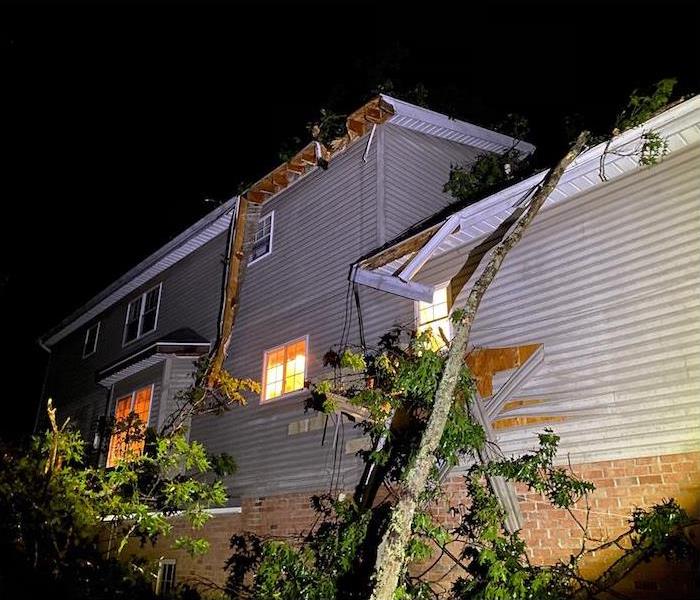 Summer storms affecting your property? Call SERVPRO of Harlingen/San Benito to restore your space in no time!
Summer storms affecting your property? Call SERVPRO of Harlingen/San Benito to restore your space in no time!
Storms can be incredibly powerful, and even when you know they are coming, they can still surprise you. A thunderstorm can move into the area fast and leave behind destruction that makes your head spin.
Living in Texas has certainly taught us this, particularly in the warm months when tropical storms, hurricanes and strong thunderstorms dominate the news. Our weather can quickly swing from dry to wet, which leaves us vulnerable to flooding as well.
We know how incredibly important being prepared before a storm is, but it is also important to know what to do after a storm has moved out and left behind damage. When a storm leaves destruction in its wake, take quick action to make a fast recovery.
Immediately After the StormStaying vigilant after the initial threat has passed is important in order to continue protecting your family. Lighting may be lingering, or the rain may pick back up as another round of storms pushes towards you. Keep a weather alert device close at hand, and make sure you can get back to a safe shelter quickly.
Once things have quieted down, begin checking on your family members. If you don’t have cell service, text messaging may still work. When you are planning before a storm, make sure your family knows how you plan to communicate.
If you can safely exit your shelter, check on those around you. Don’t go into damaged buildings, but instead look for places you may be able to access anyone who needs help. As safely as you can, clear the street or other roadways so that emergency personnel can reach you.
Start taking pictures, and call us at SERVPRO of Harlingen/San Benito. With our 24⁄7 availability, we are ready to take your call and start your recovery.
As More Time PassesAs you are able to further digest the shock of a severe storm hitting, the scope of work that awaits you to recover will become clear. Make sure you still remain cautious of both the area around you and the weather. Always wear the proper shoes and other safety equipment, avoid nails and boards, and keep a weather radio handy.
One of the first priorities our crew will take on when they reach your property is securing your home so that no further damages can set in. This might mean tarping your roof or sealing off windows, or it could mean removing standing water and starting the drying process on anything that got wet. Depending on how hard your home was hit, you may want to consider finding a safe place to stay while restoration continues.
SERVPRO® will work with your insurance company directly so that the claim process is as smooth as the rest of your recovery. While we are putting your life back together, it’s crucial to try and stay as calm as possible. Seeing your home damaged in a storm can be devastating. With our team working on your property around the clock, we will have you back home in no time.
If a storm leaves your home damaged, contact us for fast recovery. We’re here 24⁄7 when you need us.
Prepare Your Home for Extreme Winds | SERVPRO® of Harlingen/San Benito
6/9/2023 (Permalink)
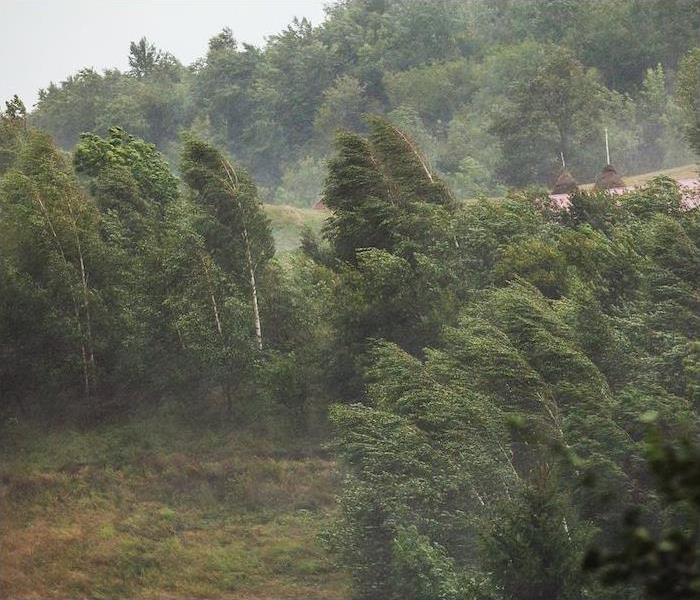 If you've suffered from storm-related damage to your home or business, make SERVPRO of Harlingen/San Benito your first call.
If you've suffered from storm-related damage to your home or business, make SERVPRO of Harlingen/San Benito your first call.
The wind is one of those things that we all know exists, even though we can’t touch or control it. A cool breeze on a hot day can feel like a sweet gift, cooling you to the core and helping you catch your breath. Strong winds, however, can quickly become a nightmare.
Strong winds are almost always associated with severe weather, but gusts of winds can pick up and cause damage even when the skies are blue. Strong winds can be devastating, leaving your life feeling like a mess.
The more you get to know about wind and what it can do, the better prepared you can be for those times when things get rough.
The Different Kinds of WindMost of the time when damaging winds are reported, it is in conjunction with thunderstorms. More wind damage is reported nationwide from thunderstorms than tornadoes, making these storms something we should always pay attention to.
There are quite a few different threats that can come along with thunderstorms, but typical wind gusts can reach close to 60 miles per hour. When the wind gets that strong, loose debris will be thrown around yards quickly.
Thunderstorms are common in Harlingen, and they often become severe and include strong winds. Our location in Texas also means we can be vulnerable to tropical storm strength winds and even hurricane strength winds. Damaging wind is something we all need to be prepared for.
One particularly damaging kind of wind is called “straight-line wind.” These winds refer to any kind of strong wind that is not associated with rotation. Straight-line winds can reach up to 100 miles per hour, and can reach far beyond the center of a storm, which means damages can be seen in areas that didn’t see any rain.
Tornadoes also come with a variety of severe threats, including several different kinds of damaging winds.
Straight-line winds, downdrafts, and both micro- and macro-bursts are common kinds of winds that come along with a tornado. These kinds of winds can take out a forest of trees in an instant, and leave a path of destruction everywhere they go.
Wind Damage and PreventionThe most common kind of damage that results from strong winds include downed trees, projectile debris and power-line damage. Even a non-permanent structure that is anchored down can be blown over when winds reach 80 miles per hour.
A great first step to protecting your home and your family is getting to know the different weather alerts associated with high winds. Take the time to secure loose objects outside of your home as well, including patio furniture, trash cans and gardening supplies, in order to prevent as much debris damage as possible.
Trim trees in your yard regularly, and for any large trees, consider professional maintenance every five to 10 years in order to lower the risk of downed trees. Keep your yard clear of small objects like tree limbs or anything else that could take flight when wind gets strong.
Make sure you have a safe space in your home where you can shelter when strong wind warnings are issued. You may also want to close your hurricane shutters if you have them on your windows, or consider having them installed if you don’t.
After a storm has moved through and it is safe to head outside, walk your property and look for damage. Call SERVPRO right away if you spot any, and tackle roof or gutter issues as quickly as you can safely do to prevent water damage.
Has your home been damaged by wind? Call us and get things cleaned up fast.
When Storms or Floods Hit the Rio Grande Valley, SERVPRO of Harlingen and San Benito is Ready
9/27/2022 (Permalink)
SERVPRO of Harlingen and San Benito specializes in storm and flood damage restoration. Our crews are highly trained and we use specialized equipment to restore your property to its pre-storm condition.
Faster Response
Since we are locally owned and operated, we are able to respond quickly with the right resources, which is extremely important. A fast response lessens the damage, limits further damage, and reduces the restoration cost.
Resources to Handle Floods and Storms
When storms hit the Rio Grande Valley, we can scale our resources to handle a large storm or flooding disaster. We can access equipment and personnel from a network of over 1,700 Franchises across the country and elite Disaster Recovery Teams that are strategically located throughout the United States.
Have Storm or Flood Damage? Call SERVPRO of Harlingen and San Benito Today 956-277-0645
Maintenance of trees during windy season
9/27/2022 (Permalink)
Having trees in front of your house makes the property look welcoming and endearing, but there are some cons to having a tree as well. Having a tree on your property near your home brings shade to your yard and fun adventures for your kids. Trees also tend to grow a lot and sometimes get out of hand. This is when trees can be bad if they are too close to your home. If one day it is super windy, and the wind causes your tree starts to sway and the branches start to scrape up against your house or your roof, and damages end up happening to your home and you try and call your insurance agent to see if they will cover the bill for the damages because of the wind. They won’t be able to help you with the cost of the damage because they will tell you that is lack of maintenance on your trees. So SERVPRO of Harlingen and San Benito would like to remind you to make sure that you are trimming your trees regularly to prevent this from happening.
Protect Your Home From the Threat of Lightning | SERVPRO® of Harlingen/San Benito
9/27/2022 (Permalink)
You likely already know how essential it is to prepare and maintain fire safety supplies in order to protect your loved ones, but even with the best-laid plans, the weather may change everything in an instant.
Lightning was the cause of at least 70,000 damage-related insurance claims in 2020, and it is estimated to strike close to 6,000 times every single minute. This clearly shows that lightning is a high risk we should all do our best to prepare our homes and our lives for.
What is lightning?
A giant spark between the air and the ground is what we know as lightning. Thunderstorms and lightning go hand in hand, but lightning also occurs due to the extreme heat of a forest fire, the heaviness of a snowstorm or the extreme of volcanic eruption.
A sudden bolt of lightning can strike out of dry, sunny skies, too. This phenomenon is known as “dry lightning,” and it creates a dangerous situation as the heat of the strike meets dry grass, trees or other vegetation and starts a wildfire. Lightning is a possibility in every single season, so preparation is key to preventing damages and staying safe.
<h3your-home-from-lightning-fires">Protecting Your Home From Lightning Fires
Lightning can do a lot of damage to a home, and even has the potential to start a fire. A fire from a lightning strike would likely start in your walls or attic, and it can be caused by either the intense heat of the strike itself or an electrical surge that occurs when the strike passes through your home wiring.
A fire may not be immediately detectable, but the sound of the strike will be.
If an incredibly loud noise has shaken your house, look around for signs of burn marks, singeing and smoke. Call the fire department if you do find anything, and check with an electrician to ensure the wiring in your home is safe after the all-clear has been given.
In order to give your home some protection from lightning, consider adding a metal rod, or lightning rod to your roof. This conducts the electricity of a lightning strike into the ground rather than into your house.
A whole-home surge protector is another great preventive tool for your home’s protection. This is added to your main electric panel by an electrician. This kind of surge protection can go a long way in reducing the risk that a strike will cause a surge that could kill your appliances and spark a fire.
<h3lightning-strikes-nearby">When Lightning Strikes Nearby
Every year, approximately 9,000 wildfires are the result of a lightning strike. The intensely high heat of lightning means that these fires move fast and threaten a great deal of land once they are burning. Regardless of the time of year, a dry season means a high risk.
Make sure your landscaping stays free of vegetation that is dead or dying, and think about using defensible zones in your yard to protect your home by diverting fire away when lightning does strike nearby.
Make sure every level of your house has a working smoke detector so you and your family are alerted as fast as possible.
If you do have fire damage, call SERVPRO at any time, day or night. We are ready to take on every part of the restoration process with industry-leading equipment and extensive experience. It is our goal to get you back to life as normal.
Have you experienced smoke or fire damage in your home? Call us today to get the restoration finished fast.
Precautions to take after a flooding.
9/9/2022 (Permalink)

With any water loss, it is best to call for professional help as soon as possible. After a storm there can be multiple instances that water damages can occur. First call a professional to guide you on what they preferred you take care of if you wanted to. SERVPRO wouldn't want you to put yourselves in harms way, so it's best to call our offices prior to entering any damaged areas. If you did want to rake precautions you could start by making sure you or your family members are not in harm's way. Try removing as much water as possible by mopping the area. Remove any wet area rugs/carpets that are not permanently attached. Prop up wet furniture on cushions and raise the furniture on the floor. It is essential to try to remove as much water as possible because bacterial growth can grow within hours of the water loss. SERVPRO of Harlingen and San Benito employees have had training in water damage cleanup and restoration. So you can trust that your home or workplace will be in safe hands. We’ll make it as though it never even happened!
Prevent Home Flooding Both Inside and Out | SERVPRO® of Harlingen/San Benito
9/9/2022 (Permalink)
Flooding can happen anywhere, which means that anyone who owns property needs to be prepared. As little as an inch of water can create substantial damages.
If you live in an area that is not considered high risk for flooding you may not qualify for financial help from private insurers or federal funds. This makes preparation even more important to avoid costly repairs.
There are things you can do to prepare your home, starting with understanding your risks. Most of our area has seen flooding in the past, and carries many risks from rivers and heavy rains.
We also know that if sea levels rise, there are additional risks. These factors mean that we need to act now in order to be best prepared and protect our properties.
Protecting Your Home From the OutsideFloods can come from anywhere, even when completely unexpected. A heavy rain can leave gutters overwhelmed and yards soggy. When you take the time to prepare your home both inside and out, you can lower your risks and minimize your damages.
Clean your gutters regularly to remove debris that could block the flow of water. You could also consider adding an inexpensive extended downspout to ensure that water moves away from your home.
You can also use your landscaping to keep water from gathering and coming into your house. Adding a garden is a great way to increase absorption by pulling water down through soil into roots.
Organic materials such as mulch can also provide a great layer of protection when added near the house in a sloping pattern. This can protect your foundation by keeping water moving away and preventing puddles.
There are also some upgrades you could consider, including having electric moved up on the exterior of your home and anchoring fuel tanks. While these can be costly, adding an inexpensive rain barrel that catches water directly from a gutter can be effective at preventing ponding water and provides a free source of water for your plants.
Flood Protection From the InsideProtecting your home from sources of external flooding means having a thoroughly sealed basement and well-shored up foundation.
A sump pump is also highly effective at removing water before it can cause damages. Since we have such a high risk of flooding and other storms in this part of Texas, a battery-operated pump might be the best idea to ensure water is removed from your home even if the power is out.
For protection from flooding that does not start outside, simple home maintenance can make a big difference.
Pipes that have aged and worn out can fail and cause substantial flooding. Take care of dripping faucets and make checking your plumbing a regular part of your weekly schedule to stop damage before it can start.
A leak sensor can also be a smart investment to catch water when it is somewhere that it shouldn’t be before it can become a major problem. There are home security systems that include this as an upgrade, so add it the next time you update your installation.
No matter where the water comes from, photographs, books and other paper goods will be damaged immediately. Keep irreplaceable items and important documents stored somewhere safe, and add SERVPRO to your emergency contact list. We are available 24⁄7 to start drying out your home fast.
Experienced water damage in your home? Call SERVPRO today to get your restoration completed faster.
3 Types of Common Storm Damages | SERVPRO® of Harlingen/San Benito
8/25/2022 (Permalink)
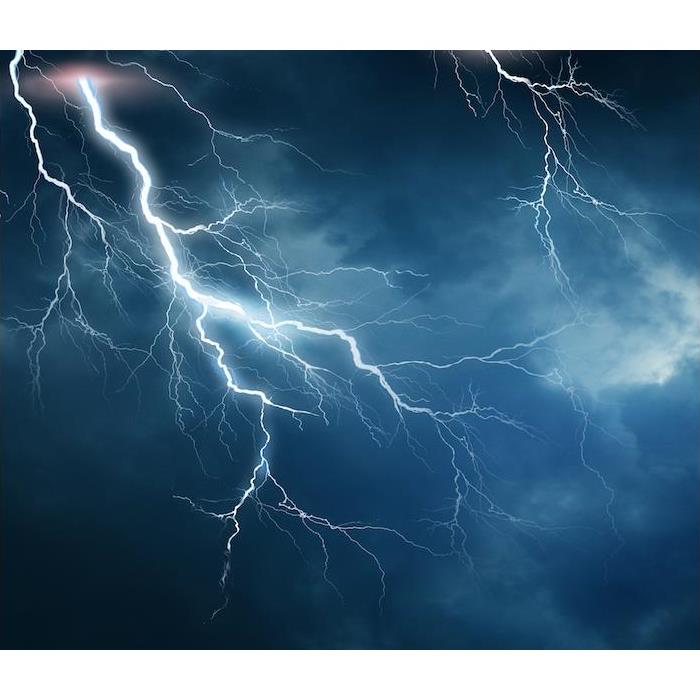 When you suffer storm-related damage to your home or business, make SERVPRO of Harlingen/San Benito your first call.
When you suffer storm-related damage to your home or business, make SERVPRO of Harlingen/San Benito your first call.
Severe storms are the last thing anyone wants to deal with. When you are a homeowner, you worry not just for the safety of your family, but also about whether your property will be damaged. Most homes can take a lot, but sometimes a storm blows in that will leave behind a trail of damages.
Each season comes with threats that can include strong thunderstorms and snowstorms, and when combined with the year-round risk of flooding and strong winds, your home is vulnerable to all kinds of damage.
The kind of threat your home faces depends on several factors, including the type of weather hitting, the location of your home and even the way your property is landscaped. The way your home is constructed also plays a part of your weather related risk factors. And sometimes things simply come down to luck.
Our Texas weather is a treat in the winter as our temperatures typically stay fairly mild, but in the warmer months, we face the risk of tornadoes, hurricane activity, hail and severe thunderstorms. We know our warmer months mean staying extra prepared, but the more we can learn about the most common forms of storm damage, the safer we can keep our home and our loved ones.
Wind
Wind damage happens frequently with a variety of storms throughout the year when gusts beat buildings at extreme speeds. Tornadoes and hurricanes carry these intense winds, but a standard thunderstorm can also have gusts of up to 100 mph and cause a lot of property damage.
Winds this strong can throw debris around your property and cause damages to your house and your cars. If a storm is going to have high winds, go inside an interior space where you can avoid windows and walls, as thrown objects can shatter glass and pierce walls.
You can take action to mitigate damages. Pick up loose limbs regularly, and keep large rocks far from your house. If you have outside furniture, secure it so that it can’t be flung in a storm. Trim trees that have grown tall and take any that are dying down. The fewer items a storm can throw, the less damage your home is at risk for.
Water
Water causes a good deal of property damage across the nation. Even a mild storm can leave large amounts of rain on the ground that can enter through the seals on your window and doors.
If an enormous amount of rain falls and pools up outside your home, it can begin to flow through the floor and foundation of your home, which can cause structural damage.
You can limit damages that water may cause by being strategic about the space outside of your house. Landscape your yard to create a slope so water runs down, and look into installing a rain garden. This is both eye-appealing and a highly effective water absorption source.
Cleaning out your gutters is another effective way to keep water away from your home. When your gutters contain leaves or other materials and become blocked, water is unable to flow well and can overwhelm your gutter system. This can result in water leaking into your home through the roof and creating damage on every level of your house.
Impact
Impact damages happen when debris crashes into objects during or after a storm. This kind of damage can create total destruction to your house. It typically involves fallen trees or wind-blown debris. Impact damage is created by anything that can be thrown about or pushed in the wind.
In order to protect your home from this kind of damage, keep your trees trimmed or removed when they are no longer viable.
Last year, the weather created more than $145 billion in damages across the United States. When you are prepared for different risks, you can reduce the threats your home faces while you protect your loved ones.
If you do experience damage during or after a weather event, call SERVPRO of Harlingen/San Benito. We are ready 24⁄7 with years of experience and industry-leading equipment to get your restoration started quickly. No matter what disaster you face, we will take care of it and get you back home faster.
When you suffer storm-related damage to your home or business, it’s important that you know who to call! Contact us today to get your storm damage restoration started faster.
Make SERVPRO Your Top Restoration Choice | SERVPRO® of Harlingen/San Benito
8/8/2022 (Permalink)
 No matter what type of disaster you face, SERVPRO of Harlingen/San Benito is only a phone call away.
No matter what type of disaster you face, SERVPRO of Harlingen/San Benito is only a phone call away.
As small business owners, we understand how stressful the day-to-day can be. Managing your to-do list while trying to find ways to make things successful is a lot to handle, and a disaster striking can throw your entire world for a loop.
Natural disasters can’t be prevented, and sometimes we can’t even predict them, but we can do everything in our power to prepare for them. And since disasters aren’t solely possible at the office, that means preparing our home and our loved ones, too.
In order to be ready for anything that comes your way, you will need an emergency plan. A good plan starts with well-rounded knowledge about different kinds of disasters. The American Red Cross is a great source for this, as they have data from disasters all around the United States and how to best protect yourself from them.
For more localized information on the kind of disasters we most commonly see here in Texas, check out the state’s emergency management page. You should also save our county’s website so that you can reference it before, during and after an event to stay up to date with everything happening here at home.
Even with your plan in place, you may still experience damage at either your home or business, or possibly both. No matter the scope or the size of the disaster, response time will always be the most important part of recovery.
The quicker your cleanup starts, the less damage can take hold of your property. That is why SERVPRO should be your first call.
Why Choose SERVPRO?We have seen it all. Events that result in the need for cleanup and restoration happen commonly across the United States, but every single one is different.
Take flooding as an example. Each year, there are 14 million homes at risk, but every single home that does see water will have a different level of damages.
Our team is trained for any kind of emergency, regardless of size or scope. We know that each situation requires a personalized solution in order to ensure that things are handled correctly.
We are available anytime. When it comes to restoration, a fast response time will always have the best results for saving as much property as possible. When cleanup starts right away, damages can be stopped before they start and you can save money on less replacements.
When a home begins to flood, furniture, paint and fabric items are damaged immediately. Any water that is able to sit for an extended amount of time leads to mold and mildew buildup, which over time creates damage to the very structure of the home. That is why SERVPRO has 24⁄7, 365 day a year availability.
Our services go well beyond the simple. Not only do we start basic cleaning right away, but we take over the project and see it through completion.
We will work with you and your insurance agent to ensure your plan is set and your claims are handled well. We can pack boxes, tarp roofs and even rebuild structures when the damage is extensive. We want to walk with you through the entire recovery process to make things as easy and pain free as possible.
No matter what disaster strikes your home or business, SERVPRO of Harlingen/San Benito has you covered. With our years of training, industry-leading equipment and expertise, we can handle anything you call us with. We will get your life back to as it should be faster than you could have thought was possible.
When you suffer damage to your home or business, it’s important that you know who to call! Contact us today to get restoration started faster.
Frequent Causes of Commercial Damage | SERVPRO® of Harlingen/San Benito
8/8/2022 (Permalink)
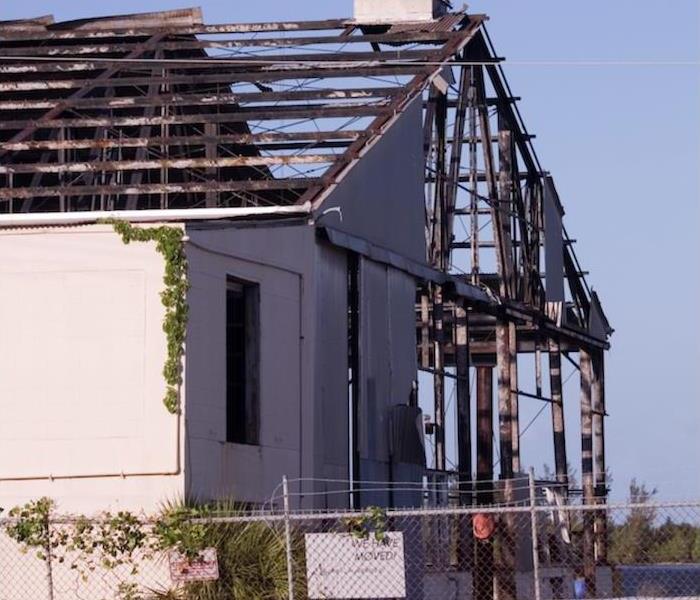 SERVPRO of Harlingen/San Benito is your local commercial disaster team. Contact us to learn more about our commercial damage restoration services.
SERVPRO of Harlingen/San Benito is your local commercial disaster team. Contact us to learn more about our commercial damage restoration services.
Since our country was started, businesses have always been a major component of its livelihood. We all work for or patronize one or multiple businesses on a daily basis.
Business owners have many things to think about as they run their commercial enterprise, even on an average day—and when a disaster hits, there can be disastrous consequences.
Natural disasters in the United States are causing more damage on average than they used to. The NCEI reports that in the past five years, our country has grappled with around $153 billion in damages per year, a significant increase from the previous period.
In a place like Harlingen, we experience many types of natural disasters. Record-breaking rainfalls were recorded last year, which can lead to flash flooding, and we also have to deal with thunderstorms, hurricane development from the gulf and occasional wildfire risks.
To help business owners better prepare for these risks, we have gathered some information to keep you informed. Read on to learn more.
Commercial Water DamageMoisture damage is something that threatens all businesses no matter where they are located. Whether these issues are from rainfall or appliance failure, water damage can wreak havoc on a commercial property.
Water from flash floods or overflowing rivers can seep through the doors and foundation of a business, where it can cause serious damages. Creative landscaping can be implemented to route water away from your building, which can be a smart prevention measure.
When leaks are the culprit, water damage can occur gradually over time in your commercial space, so it’s important to be vigilant in looking for signs of leaks such as warped or discolored walls. Catching these issues early can help you tremendously in preventing costly repairs.
Commercial Storm DamageStorm damage is a common cause of commercial damages and can devastate entire neighborhoods. Small storms are still a threat, leading to power outages, fallen trees and flying debris that can damage a business’ exterior.
Storms that are more powerful can rip off roofing and lead to irreversible property damage to your business’ structure.
An average storm will have winds from 10 to 45 mph, but strong storms that are common during the spring and summer can contain winds of over 100 mph. These winds can rip down walls, overturn freight trucks and easily snap trees and throw them around.
Storm-protective window covers and roof improvements can reduce storm damage, but they can be quite the investment for business owners.
Fortunately, even simple procedures such as inspecting your window and door seals and looking over your building frequently can help reduce costly repairs and damages. Before a storm hits, it is also helpful to clear out any debris, dead branches or other objects that could become projectiles.
Know Who to Count on for Commercial DamageWater damage and storm damage are common, but commercial damage can come in many forms. These events often lead to businesses closing, temporarily or permanently.
That is why we are here 24⁄7 to provide a rapid response to any type of commercial damage your business faces. We will quickly spring into action and create a restoration plan for your business.
If you have experienced damage to your business or want to learn more about our commercial damage restoration services, contact us today. We’re here to act fast, 24⁄7.
What Is Your Storm Safety Plan? | SERVPRO® of Harlingen/San Benito
8/8/2022 (Permalink)
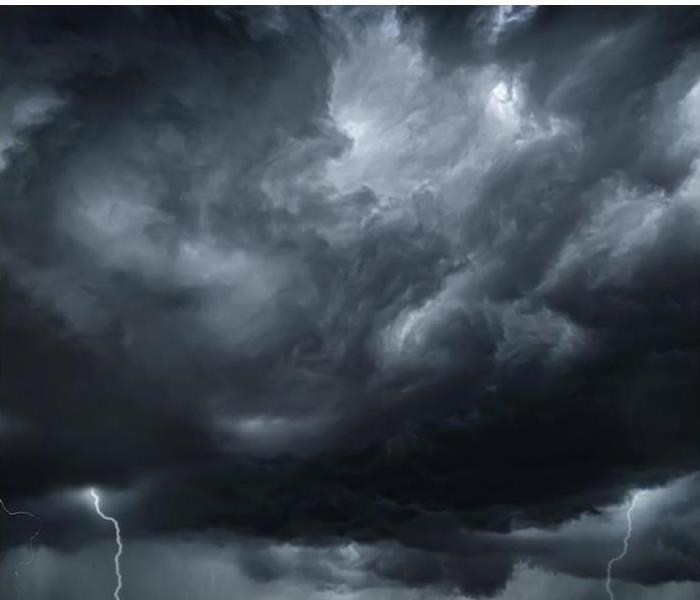 If you discover storm damage to your home or business, reach out to SERVPRO of Harlingen/San Benito right away.
If you discover storm damage to your home or business, reach out to SERVPRO of Harlingen/San Benito right away.
Severe weather is a frightening thing. Thunderstorms can bring about lightning strikes, heavy rain, hail and serious winds, all of which can cause damages and personal danger. Plus, considering that there are around 100,000 thunderstorms throughout the United States every year, these events occur with relative frequency.
During summertime, the south Texas heat can create ideal conditions for thunderstorms to pop up suddenly and cause serious damages when they do. Because of how quickly these conditions can come about, being safe is a must for residents of the area.
While we can never control the weather, we can certainly prepare for it—and that is exactly what we will be discussing today. From an emergency kit to a communications strategy to a plan for the aftermath, taking action to prepare for storms is an important way to reduce their impact on you and your home.
Your Severe Weather Communication StrategyWhen the weather turns nasty, having a way to communicate with everyone in your household and being able to receive communications from authorities is key. First, it is important to know the difference between watches and warnings so you can understand when to stay vigilant and when to quickly seek shelter.
Secondly, it is wise to have multiple ways to receive alerts from officials, such as your cell phone and an NOAA weather radio.
Third, make sure you have a communication strategy for your household. Have a designated safe area in your home (such as a basement or bathroom) that everyone knows to get to when the weather turns bad. Additionally, make a plan for communication in case one or more household members are away from home when a storm strikes—this way everyone knows when and how to check in and mark themselves as safe.
Your Severe Weather Emergency KitAn emergency kit should be packed with all the essentials that your family members need for at least 72 hours of sheltering in place, and it should be stored in your at-home storm shelter area. In your kit, include nonperishable food, water, flashlights and batteries, first-aid supplies and anything else you or other members of your household may need to stay safe and comfortable during a storm.
Your Severe Weather Aftermath ChecklistIn the aftermath of severe weather, it is important to be sure you are taking proper steps to improve your safety plan and quickly address any damage to your home. Once it is safe to do so, check your property for damage.
You will want to keep a close eye on your roof and seals around windows and doors, as these are areas where water damage is likely.
In case you do discover damage, be sure you know who to call. Having a team of trusted restoration professionals like SERVPRO of Harlingen/San Benito that you can count on to provide a quick response will bring about peace of mind, so that way you can act fast if you do discover damage to your home.
When you are able to round up with your household members, it is smart to do an audit of your entire safety plan. Gather feedback on your communications, emergency kit and any other elements that could use improvement to keep everyone safer, so that you will be even more prepared the next time severe weather rolls through.
If you discover storm damage to your home or business, you can count on SERVPRO to handle the restoration. We’re here 24⁄7 to spring into action—get in touch with us today.
How To Prevent Storm Damages to your Home
9/25/2021 (Permalink)
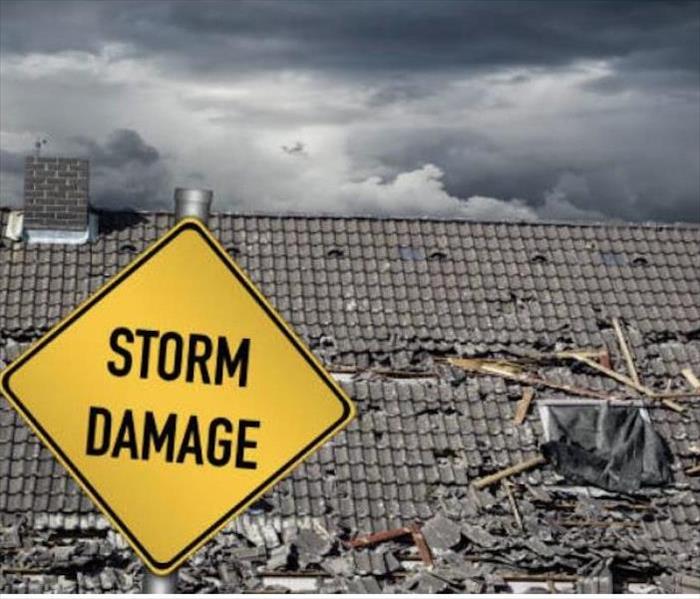 Storm Damage
Storm Damage
We always hear about how we can prepare for a storm on the news, right? We are encouraged to have spare batteries and canned foods in our home. But what about preparing before a storm to prevent damages to our home?
There are often strong winds involved in storms. An easy way to prevent damage, would be to cut any loose branches from surrounding trees, and keep them trimmed. You should also consider getting rid of or tying down anything that can be lifted up by the wind and harm your structure. For example, you may have loose bricks from construction or patio furniture, such as a picnic table that can cause damage. It is recommended that you also keep an eye on your roofing and siding conditions. Ensure that neither are damaged and if they are, have them fixed prior. Finally, be sure that water can flow away from your home and into a drain or trench in order to prevent water damage to your home. If you have any questions or would like more tips, contact us at SERVPRO Harlingen/ San Benito.
What about the dangers of thunder and lightning?
9/25/2021 (Permalink)
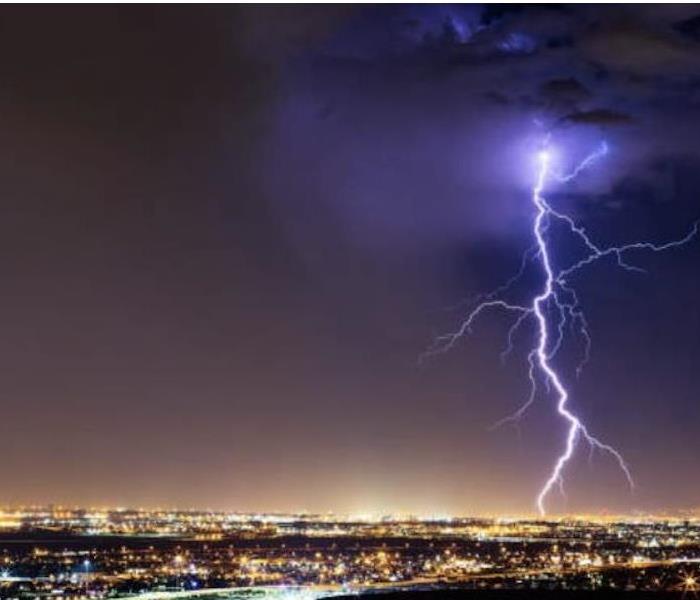 Safety Tips!
Safety Tips!
How can a thunder and lightning storm affect your home or property? We don’t always hear about this, but they can be dangerous.
As you know, thunder and lightning come hand-in-hand. The temperature of the lightning that strikes can potentially be so high as to cause a fire. This may happen within the walls of your home. If this occurs, you should call the fire department. You should also consider consulting your electrician for further assessment. Electrical surges also occur and can cause damage to your electrical belongings, such as your television or stereo system. In order to prevent damages like this, remember to disconnect any electrical devices or appliances once the storm is announced. If your home or property happens to be damaged by fire, contact our team of trained and experienced technicians at SERVPRO of Harlingen/San Benito.
How To Protect Your Home
8/11/2021 (Permalink)
Storm season brings about a lot of mild hurricanes, but can also bring about heavy storms. Regardless of the size, damage is a plausible outcome. So here are a few ways to make your home safer during storm season. Key elements to look at are windows, roofs, and door frames. When was the last time you checked on the shingles for the roof? Before storm season is a good time to replace any shingles so that they don’t lift or fall apart letting in water. Please be sure to board up any windows and place towels around any frames including door frames. Heavy winds could break windows and water can come in through the frames within your home. Water damage due to storms can be taken care of by SERVPRO "Like it never even happened."
What To Do In A Stressful Environment During A Storm
8/11/2021 (Permalink)
Let's say you've been caught in a hurricane and have lost electricity. Your kids are scared, the dog keeps barking, and your spouse keeps fiddling with the radio to hear about what's happening outside. How can you make things easier for your family during this difficult situation? Try to remain calm, it’s no good if you're frustrated as well and scare those around you. Once you’ve attained a piece of mind, brighten things up by lighting candles around the house. If you have a pet, and likely they are making a lot of noise, try to block out the noise outside with the radio. If that doesn’t work gently old your pet to provide pressure and reassurance. You can have the kids help with this, creating a distraction for them that makes them feel useful during the storm. Now when it comes to your spouse and the news take turns with this and other roles. If you take turns on food and radio watch, then you're more likely to be alert.
Storm Prevention Outside Of The Home
8/11/2021 (Permalink)
The outside of our homes can also cause a lot of damage to our house without us even realizing it. Before a storm it’s important to take these cautionary steps to make the area around your home safer. Start by trimming any trees around your home. If there are any lengthy branches the tree could cause serious damage to your home by breaking windows or even worse roofs. Take any patio furniture or decorations inside the garage or under a shed. This will prevent anything from flying into your home and breaking windows, as well as making things easier to clean up when the storm is over. Check around the house and inside the home for torn electric wires. These can be extremely dangerous and can lead to another emergency and it may be difficult for aid to reach you during the storm.
Flooding During Storms
8/11/2021 (Permalink)
When a storm occurs it’s not uncommon that flooding comes alongside it. During storms drains could be blocked, and rain will begin to turn cities into lakes. If you are ever stuck in a flooding situation try to reach high ground immediately. Do not go near bridges, and do not try to move through waters. That means no swimming, walking, or running through the water. The flooding will occur quickly and it’s very strong you could accidentally cut your limbs. These waters are so strong they could move vehicles around you so it’s best to stay away from the murky waters. Try to contact 911 in an emergency. If you are trapped in a building try to reach the rooftop, do not take the elevator go to the emergency exit stairs.
Be Storm Smart
7/8/2020 (Permalink)
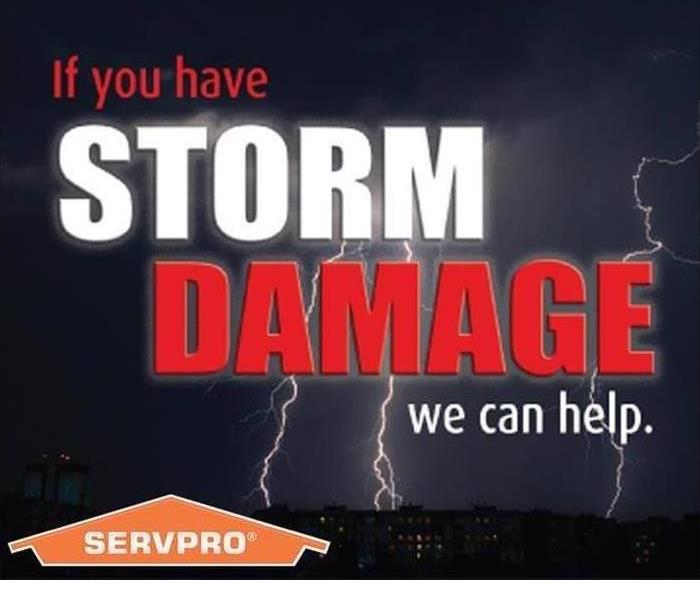 Be Storm Smart
Be Storm Smart
Floods are the most common and widespread natural disasters in the United State. Whether your home or Business is near a coastline, along city streets, in the mountains, near a river or even in the desert there is always a potential for flood damage. The American Red Cross offers the following flood safety tips.
1. Stay away from floodwaters. If you come up on a flowing stream where the water is above your ankles, stop, turn around and go another way.
2. If you approach a flooded road while driving , turn around go another way,. If you are caught on a flooded road and waters are rising rapidly around you, get out of the car and move to higher ground.
3. Keep children out of the water. They are curious and often lack judgment about running water or contaminated water.
If a flood does strike call SERVPRO Harlingen & San Benito. Floods have the potential to cause major damage to a structure, when not treated quickly and properly and the cleanup is often an overwhelming task. We are always here to help no matter the size of the disaster.
When Flood Water Rise!
7/6/2020 (Permalink)
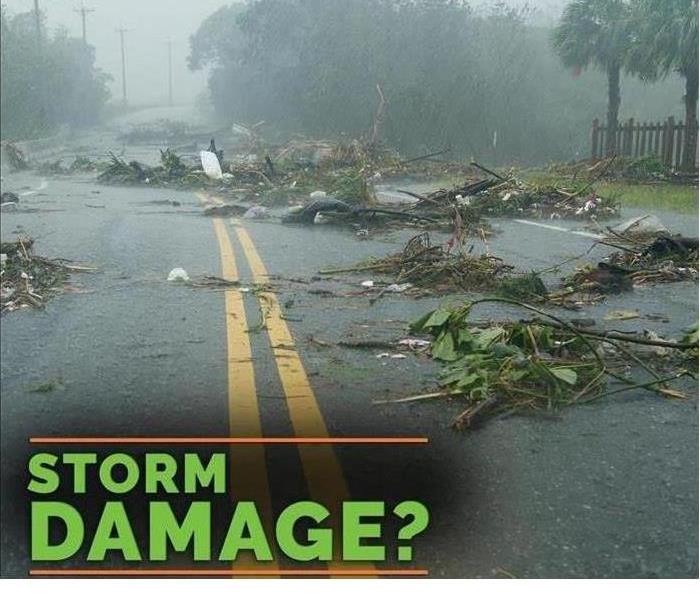 When Flood Water Rise!
When Flood Water Rise!
Flooding is always possible. Listen to wather radio, commercial radio, or TV for information.
Flash Flood Watch:
Flash Flooding is possible. Be prepared to move to higher ground: listen to wather radio, commercial radio, or Tv for information.
Flood Warning
Flooding is occurring or will occur soon: if advised to evacuate, do so immediately.
Flash Flood Warning
A flash flood is occurring: seek higher ground on foot immediately.
Flood Strikes Eveerywhere!
Flood ranks as one the most common and widespread natural disasters in the United State. Whether you live near a coastline, along city streets ,in the mountains, near a river or even in the desert, there there is a potential for suffering flood damage. In Fact , nearly 25% of last year claims paid by the National Flood Insurance Program (NFIP), were policy in moderate to low risk communitites. According to NFIP, houses in the United State have a 26% chance of being damaged by flood during the course of a 30 year mortgage, while business face similar risks by flooding. On Average flood cost $6 billion in annual losses in the U.S. The following are a few more little known flood facts:
Flood kills an average of 140 people per year in the U.S. making flooding the most deadly natural disaster. More than half of all Fatalities during floods are auto related, often the result of drivers misjudging the depth of water on a road and being swept away in a swiftly moving current. The principle causes of floods in the eastern United State are hurricanes and storms The principle cause of flood in the western United States are snow melt and rainstorm!
SERVPRO of Harlingen & San Benito values our community; we are here to help when disaster strikes! Call Us at (956)277-0645 or visit our website for more information at https://www.SERVPROharlingensanbenito.com/
Storm Preparation
6/9/2020 (Permalink)
 These are the kinds of markings that show mold on walls.
These are the kinds of markings that show mold on walls.
What is storm season and what's the big deal? As new homeowners will soon learn that storm season is more than harsh rain and strong winds. During this time homes are destroyed or slightly damaged leading to major damage later on. This is important to keep in mind when buying or selling a home. Many homes after storm season go through mold. This can occur due to badly patched up leaks, outside/indoor flooding, and even old carpet that should have been replaced. Signs for this are looking at the walls to see if there are any marks, or if the ceilings are showing air bubbles, or marks similar to the ones on the walls. SERVPRO can fix these things, and help you sell or live in your new home safely.
First Storm Season
6/9/2020 (Permalink)
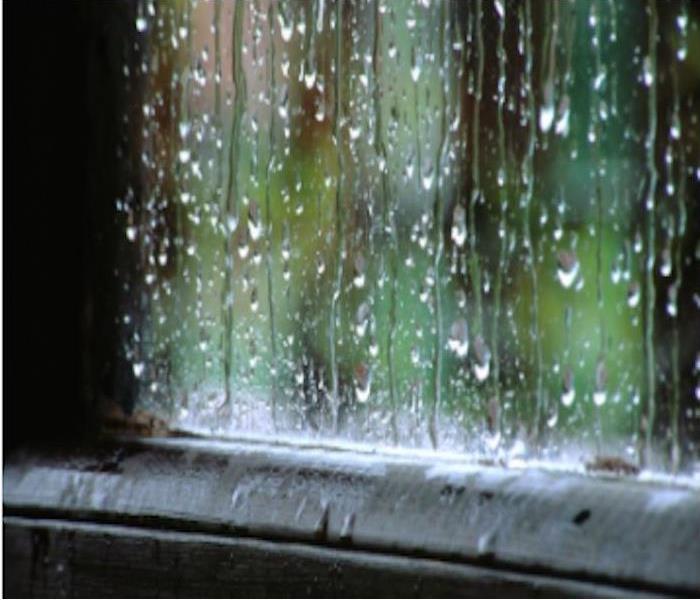 Leaks
Leaks
Handling your first storm is very stressful, especially if you're in your twenties and have just started living on your own. Some of you are in college, some are living alone, some have roommates. It’s a lot and how do you prepare for something you know nothing about, well it’s simply starting off with gathering the essentials and controlling what you can before the storm hits. Boarding up your windows is important for very serious storms such as hurricanes or tornadoes. However if you are going through the beginning of storm season you’ll most likely have heavy rain and strong winds, which can still lead to damage. Prepare by checking for any open areas such as a crack in a wall, or a door that lets in water. Now a quick fix would be applying a towel during the storm to prevent further damage, or applying putty before the storm to keep water from entering. After the storm, call us and we will inspect the home for any further damage and will take care of the open areas and/or leaks.
Hurricane Season 2020
6/5/2020 (Permalink)
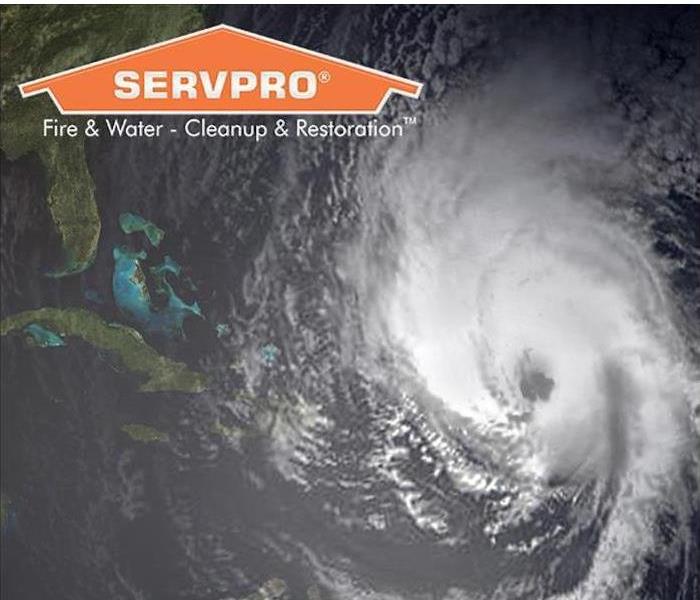 Hurricane Safety.
Hurricane Safety.
2020's hurricane season is approaching, and researchers said they think this year will be especially active. The season officially begins on June 1 and runs through Nov. 30.
Scientists at Penn State University's Earth System Science Center project the 2020 Atlantic hurricane season as the busiest in a decade. They say a combination of warm sea surface temperatures and other factors could result in the development of more named tropical cyclones than usual.
A tropical cyclone gets a name when it reaches tropical storm strength, with winds in excess of 39 mph.
The Penn State scientists said their best guess is 20 named storms this year. In a range, they're going with 15-24 storms total.
In 2016, they projected 19 named storms that season (15 was the actual count) and in 2010, their forecast was 23 (19 as the actual count). The past three years -- 2017, 2018 and 2019 -- were especially active, and scientists' guesses on the number of named storms were lower than what occurred.
Sea surface temperatures are one of the main drivers of the development of tropical cyclones, and that can be checked off the list already this year. Why? Surface waters in the Gulf of Mexico and the Atlantic Ocean were above normal for the month of March and continue to tick a degree or two above average this April.
The Gulf of Mexico is especially warm right now. Despite its smaller size, compared to the wide-open Atlantic, storms that can make their way into a favorable area for development in the gulf can strengthen in a hurry.
Whether it’s a major storm event, or faulty appliance, SERVPRO Of Harlingen & San Benito will be there , we are just a call away (956)277-0645 or visit our website at https://www.SERVPROharlingensanbenito.com/
Flood Safety Tips
6/5/2020 (Permalink)
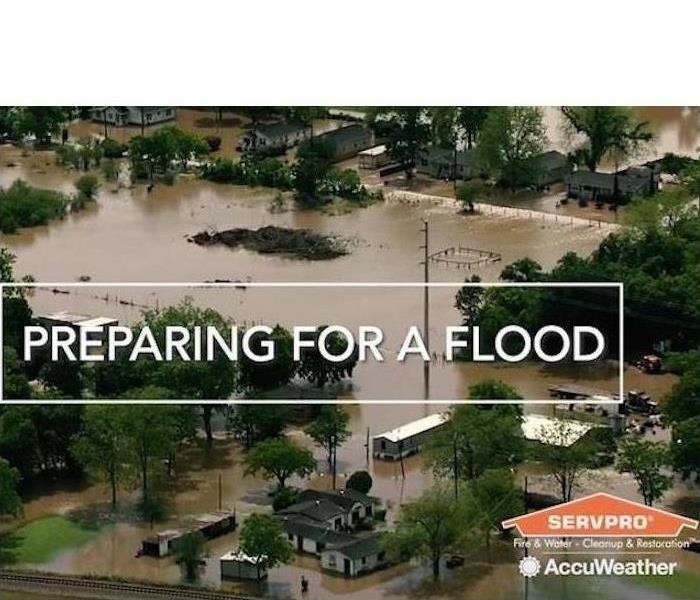 Flood Safety Tips
Flood Safety Tips
It's common to see a storm with heavy down pours of rain causing flooding in the most protected neighborhoods. Do you know what to do during a flood? SERVPRO of Harlingen & San Benito has a few tips for you to follow in case an event was to happen:
Be prepared, created an evacuation plan
Learn and identify different evacuation route to be able to evacuate quickly
If public transportation is relied on, contact the local emergency management for evacuation information.
Turn Around, Don't Drown! Moving water above two feet can knock you down, one foot of water can move vehicles away.
Move to higher ground if there is a chance of flash flooding.
If told to evacuate, do so immediately. Never drive around barricades. Local responders use them for safely direct traffic out of flooded areas.
If trapped in a building, then go to its highest level. Do not climb into a closed attic. You may become trapped by rising floodwater. Go on the roof only if necessary. Once there, signal for help.
Be Safe After
Listen to authorities for information and instructions. Return home only when authorities say it is safe.
Avoid driving, except in emergencies.
Snakes and other animals may be in your house. Wear heavy gloves and boots during cleanup.
Be aware of the risk of electrocution. Do Not touch electrical if it is wet or if you are standing in water. If it is safe to do so, turn off the electricity to prevent electric shock.
Avoid wading in floodwater, which can contain dangerous debris and contaminated. Underground or down power lines can also electrically charge the water.
Use a generator or other gasoline powered machinery. Only outdoors and away from windows.
Driving during high rain falls can be extremely dangerous. Stay updated by checking service announcements through the National Weather Service.
For more information about flooding visit https://www.ready.gov/floods. Be proactive and create an evacuation plan to keep safe. It is very important to stay up to date when it comes to natural disasters. SERVPRO of Harlingen & San Benito values our community, we are here to help when disaster strikes!
SERVPRO Of Harlingen & San Benito specialized in the cleanup and restoration of residential and commercial property after a flood or water damage event. Our Staff is highly trained in property damage restoration. Call us At (956)277-0645
2019 Hurricane Season Prep (Pt. 4)
7/8/2019 (Permalink)
 Hurricane flooding Evac
Hurricane flooding Evac
Rey Luna – Sales & Marketing
(3-minute read)
This blog post concludes the 4th and final portion of our Top 20 Hurricane Prep Tips.
We’ve covered a lot about what to do in the first 3 portions (1-15), so for our final 5 points, I’d like to cover specifically what NOT TO DO during storm time.
Some of these should be fairly common sense, however, I have an uncle who’s done one of these, not just once, but twice! So, this one’s for you, Tio Ben! Lol.
Approaching downed power lines.
At first glance, one can say that this point is pretty obvious. True. If we see a broken line, I’m sure we’ll stay clear. But sometimes the damage is not so easily seen, and that can be extremely dangerous. As a rule of caution, DO NOT touch any large metal objects outside as they could be touching a power line that you may not be able to see.
Driving/walking in flood waters.
Again, another seemingly obvious point, but ask my aunt Linda how many times they’ve had to replace their car because my uncle thought he’d make it.
So, with that being said… let’s go over the reasons why.
Number 1 is easy! You can ruin your car!
Number 2 is a little more complex. You can’t see what’s lurking in the water. Maybe a dangerous animal or just as deadly… bacteria. You may have just recently shaved and left open pores on your skin leaving room for bacteria to enter. Or you may have a small cut, again allowing bacteria to enter. It’s very unfortunate to have to lose a limb to amputation from a severe staph infection because you couldn’t wait to take the proper precautions.
DO NOT Empty in-ground pools.
You may feel like this is a good idea because you’re trying to avoid the pool overflowing… BUT… with extreme rain, such as in a hurricane, the water table (amount of water held in the ground) can rise. And without water to hold down the pool, this can even put enough force for the pool to literally be pushed up out of the ground.
As I’ve been during research and looking at some of the other suggestions by other blogs, I’ve seen repeatedly the suggestion for using candles.
This has to be some of the worse advice for storm time. Especially if you have small children or pets that don’t really stay still. You’re already dealing with one disaster, the last thing you need is for a candle to be accidentally knocked over and start a fire.
Approaching wondering animals.
It seems like almost every day I see a growing amount of animal lovers. Which really warms my heart, honestly. But one thing to keep in mind at the end of the day, as much as we want to help our furry friends, sometimes they are not capable of reason and therefore are nervous and confused.
If you happen to come across an animal that you may feel needs assistance, call a professional. Do not approach a scared/nervous animal as they are more likely to show aggression rather than appreciate your help. Remember, they’re scared and possibly misplaced from home. They can and will bite if they feel uneasy.
This concludes our list of Top 20 Hurricane Prep tips.
We hope that we’re not faced with a major storm this year, but should unfortunate events transpire, know that SERVPRO has your back.
2019 Hurricane Season Prep Top 20 (Pt. 3)
7/1/2019 (Permalink)
One other thing to be sure to have on hand would be a camera. If the damage is significant, you may be having to file an insurance claim. If this is the case, then they would require photos of the damage done to your home. So, before any repair or clean up work is done, make sure to snap several photos to document anything that may need repairs.
We don’t want a repeat of the RGV Gas Shortage of 2017. It’s best to make sure you never go below a half-tank of gas in your vehicles. Top ‘em off as often as possible. You’re not actually spending more money on gas; you’re just replenishing as you go. This will make sure you’re always full and never caught off guard. If you have any gas drums or spare gas tanks, be sure to fill those up as well so that you have a backup supply. You never know when you or someone you know may need an emergency refill.
Something else to make sure you’re topping off every now and then is your on-hand cash supply. This is something that you don’t want to have too much of, as it can be difficult to keep track of and can be more of a risk. The needs of every family are different, but maybe just a couple hundred bucks would be useful to get you out of a bind or purchase last minute/emergency supplies is all that’s needed.
In the event of an emergency road trip, you’re going to want to make sure that your vehicle is running 100%. The last thing you want is another unexpected tragedy once you’re on the road away from home and away from friends or family that can help.
Be sure to have a means of communication in the event that cell phones are no longer an option. You may have figured out a way to keep them charged, but if cell towers have been disrupted or damaged, then we lose connectivity. 2-way radios could be an option for you or consider trying Bluetooth antennas. If you’re tech-savvy, this could be an interesting option for you.
2019 Hurricane Season Top 20 PREP TIPS (pt. 1 of 4)
6/7/2019 (Permalink)
 Get ready now! Don't wait until you have to!
Get ready now! Don't wait until you have to!
Springtime is officially wrapped up here in the RGV and we bring in another HOT, HOT Summer. But along with the warmer weather is the higher risk of adverse conditions. Enter HURRICANE SEASON.
Every year we see the same suggestions and preparation steps needed to get ready.
However, instead of waiting until there’s an actual hurricane, there’s really no reason why these steps can’t be started ahead of time so that you’re not at the store looking for supplies with nothing but aisles and aisles of empty shelves.
Family/Household meeting:
This is where you’ll discuss your plan of action. Make sure everyone is aware of the evacuation routes just in case of the rare event that some become separated. It’s also a good idea to assign different roles and tasks to each person and make sure everyone is aware of the duties that are left in their care. Make plans to tackle the rest of the list together early during the summer so as to not be caught off guard. Perhaps setting aside a weekend together as a family to prepare the yard or go over inventory and supplies.
Supplies:
In your preparation, you should be sure to include any supplies or special gear you may need. Battery powered tools, chargers, and any necessary medications for your family and/or pets. Included in his list will be extra clothes, food (preferably non-perishable), first aid kits and anything else you think you’d need for at least a 1 week stay out of town if necessary.
Important documents:
Once out on the road, one can forget that there’s more than just tools and gear you might need. Special documents, cash, and other important information may be especially necessary. It’s important to keep these particular items safe because they are easily lost or damaged. To avoid this, pack a firebox or small fire safe along with your belongings. These are very inexpensive and are also waterproof most of the time. Take extra precaution by taking pictures of those documents so that you have a digital copy easily accessible on your phone or tablet.
Family pets:
Keep in mind the furry members of the family. Animals really can’t prepare like we can so they’re gonna need our help to stay safe. If you have your pets outside, you’ll have to make arrangement to temporarily house them inside and out of the elements. Just like humans, they need food, water and shelter. Make sure you pack an emergency kit for them as well. If you need to evacuate, then you’ll want to keep in mind that you’ll have extra companions. And no… the back of the pickup truck is not a very safe place for them to ride, unless they have a proper kennel secured in place.
Window covers:
Board up those windows early! Can’t stress this enough… prep supplies run out quickly once a storm is announced to be heading our way. Don’t wait! You don’t have to necessarily install everything now, but it’s a good idea to at least buy what you need, and have it set aside ready for when you do need it. There are many ways to go about prepping your windows. Plywood is effective and very cost effective, but, you’re definitely gonna need some help to get the job done. Hurricane Shutters are a nice addition to the home, they add appeal to your home and it’s a lot easier prep your home every year. But this method is more costly. However you chose to go about it, make sure it’s done well in advance!
Keep these tips in mind as you prep for the season and stay tuned for Parts 2, 3 and 4 coming soon!
2019 Hurricane Season TOP 20 PREP TIPS (pt. 2)
6/7/2019 (Permalink)
 South Texas flooding.
South Texas flooding.
Loose items in yard:
The reason for boarding up windows to protect your home from any flying debris that appears during storm time. We can further minimize damage to our property and others by taking the time to pick up and store any items that we may have laying out in the yard. Decorative ornaments, lawn statues or figurines and children’s or pet’s toys. Also be sure to wrap up any water hoses or pathway lighting. Taking these measures can prevent further damage to your property.
Insurance coverage:
Probably one of the most important things we can do to protect our properties is making sure that they’re properly covered with the correct insurance policies. A common misconception is that having Home-Owners Insurance alone is enough to cover your damages. However, in the event of a storm where heavy flooding is concerned, you will specifically need flood insurance. A separate policy from that of your home-owners insurance. There are plenty of great companies. Be sure to communicate your needs to your local agent and find what works best for you and your family.
Now, how relevant is this to our local community??? The RGV is not a traditional Mountain Valley. We are a River Valley. More than that… we actually sit on a flood plain. This is due to the fact that in older times, farmers didn’t have the irrigation systems we do now, so they would literally flood the fields with resacas fed from the Rio Grande and the Arroyos. Many of these fields no longer exist, and are now the subdivided neighborhoods we live in. So, yeah… we NEED flood insurance.
Evac route(s):
For us here in the RGV, travel is pretty simple. You go one way, you get to Upper Valley/McAllen area. You go the other way to head to the Island. During storm time though, that same simplicity makes things a little difficult. Because everyone will be evacuating at the same time, and there are basically only 2 ways to go, traffic can become an issue. Be sure to plan back-up routes just in case your first option is not safe or become too congested.
Make this a fun mini road trip for you and the family. Or if you just need a little get-away drive. Drive through different parts of town and get to know some of the outlying areas.
Loss of power/water:
If evacuation is not necessary and you and your family plan to ride it out at home, be ready to lose power and running water. In a situation like this it’s a good idea to store and gather as much water as you can. While still possible, prefill bathtubs and sinks for flushing toilets, cleaning and laundry. My neighbor has his rain gutters collecting water in large drums during storm time.
As far as power is concerned, you can only buy so many batteries. But you can store as much as you need to in small rechargeable power packs. These come in all kinds of sizes and are especially convenient when you need to recharge your cell phone, but they may also be able to power other small tools such as flashlights and small radios. Be sure to have these charging the moment you know a storm is heading our way and test them frequently throughout the year to ensure they function properly.
Turn off gas/ unplug small appliances:
In the event of a power surge, many of the electrical components in our appliances can be damaged. It’s important to use surge protectors and if need be, even disconnect the power to anything you may feel could be at risk. The last thing you’d want is to have power come back on only to realize that your items no longer work.
It is important to note, if you evacuate your home or business, DO NOT turn off your gas supply at the main meter. Only emergency or utility personnel should turn the valve on or off. You CAN turn off the gas for individual appliances at the appliance valve near each unit if you choose to do so. Most codes now require an appliance valve within six feet of each appliance.
This completes Part 2 of our Hurricane Preparation list. Stay tuned for Pt. 3 & 4!
Weslaco Emergency Preparedness Meeting
6/1/2018 (Permalink)
On Wednesday, June 30, 2018, we at SERVPRO of Harlingen and San Benito were invited to the Weslaco Emergency Preparedness Meeting. At the meeting, there were speeches given by the Mayor, Commissioner, the head of the Office of Emergency Management, and Barry Goldsmith from the National Weather Service. During the breaks, the people in attendance would stop by our booth and we would inform them of what we at SERVPRO of Harlingen and San Benito can do in an emergency. We also informed the business owners about our free Emergency Readiness Plan (ERP) and made appointments to complete ERPs the following week. All in all, it was an amazing experience with the people of Weslaco and we can not wait to follow up with those wonderful business owners!
Storm Proofing
5/31/2018 (Permalink)
With the impending hurricane season, it is imperative that you have all your buildings ready for the possibility of a dangerous storm. You also want to make sure that your buildings have flood insurance, especially because it takes 30 days for it to kick in.
The following are ways that you can better prepare your home/business for a major storm.
- Hurricane film
- This specially made film can keep shards of window glass from getting into your home after the window has shattered.
- New windows
- Replacing your old windows with heavy-duty, wind-resistant windows can make a big difference when up against strong winds. Also, they can provide better insulation for your home, and might reduce your energy bill.
- Storm shutters
- These can be your best form of protection against high winds, they can also be taken off and reapplied every hurricane season.
- Skylights and tubular daylighting devices
- If you do have skylights in your home, it is best to upgrade the glass to strong, energy efficient glass that can protect your home against debris that the wind might throw.
- A tubular daylighting device disperses light throughout your home by means of reflective tubing and a rooftop dome. These can be especially helpful if you lose power.
- Doors
- Replacing your current door with a windstorm door is a necessity when preparing for a strong storm, as these FEMA approved doors can deal with pressure from 250 mph winds.
You can never be too safe when dealing with storms, and as the hurricane season is upon us, it is best to make sure your house is prepared for whatever mother nature throws our way.
 SERVPRO of Harlingen/San Benito is ready to help in a moments notice after spring showers leak in to your home or business.
SERVPRO of Harlingen/San Benito is ready to help in a moments notice after spring showers leak in to your home or business.






 24/7 Emergency Service
24/7 Emergency Service






